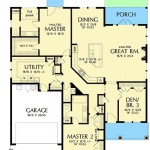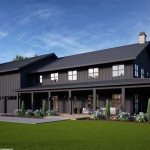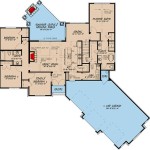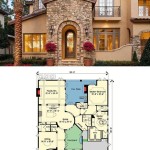Single-Family Homes: Exploring Floor Plan Considerations
The floor plan of a single-family home is a critical element in determining its functionality, livability, and overall value. It's the blueprint that dictates the layout of rooms, hallways, and other spaces, influencing how people move through the house and how they interact with their surroundings. Understanding the nuances of single-family home floor plans can help potential buyers make informed decisions and ensure they find a home that perfectly suits their needs and lifestyle.
Key Considerations in Single-Family Home Floor Plans
Several factors contribute to the design and appeal of a single-family home floor plan. These include:
1. Functionality and Flow
A well-designed floor plan prioritizes functionality and flow, ensuring a seamless and intuitive movement throughout the house. This means creating a logical arrangement of spaces that cater to the needs of the occupants. For example, a kitchen and dining room should be conveniently located near each other, while bedrooms are ideally situated away from noisy areas like the living room or home office.
The flow of a floor plan can be further enhanced by incorporating open-concept designs, which eliminate walls between certain areas to create a sense of spaciousness and interconnectedness. This approach is becoming increasingly popular in modern homes, allowing for better natural light flow and promoting a feeling of openness.
2. Space Allocation and Utilization
The allocation of space within a single-family home floor plan is crucial. It's not just about the size of individual rooms but also about the overall balance and distribution of living areas, bedrooms, bathrooms, and storage. A well-planned layout ensures each space serves its intended purpose effectively and efficiently.
Factors influencing space allocation include family size, lifestyle, and individual preferences. For instance, a family with young children may prioritize a spacious playroom, while a couple who works from home might require a dedicated home office.
3. Outdoor Space Integration
Modern single-family home floor plans often emphasize the connection between indoor and outdoor living. This is achieved through thoughtful placement of doors and windows, creating a seamless transition from the living room to the patio, garden, or balcony. Integrating outdoor spaces not only enhances the visual appeal of the home but also provides residents with a place to relax, entertain, and enjoy the outdoors.
Strategically designed features such as covered patios, decks, or balconies offer protection from the elements and provide additional living areas that can be used year-round.
Beyond the Basics: Exploring Different Floor Plan Styles
While the core principles of functionality, space utilization, and flow remain consistent, floor plan styles can vary widely, reflecting different architectural influences and design trends. Some popular styles include:
1. Open Floor Plans
Open floor plans emphasize the flow of space by minimizing walls and creating a sense of interconnectedness between rooms. This approach is often favored for its ability to promote natural light circulation, create a more spacious feel, and facilitate social interaction between family members or guests.
2. Split-Level Floor Plans
Split-level plans are characterized by staggered levels, typically with the living room and dining room on one level, bedrooms on another, and additional living spaces or recreation areas on a lower level. This design offers a unique combination of privacy and openness, allowing for distinct areas within the home while maintaining a visual connection between them.
3. Ranch-Style Floor Plans
Ranch-style homes are known for their single-story design, typically featuring a more sprawling layout with a focus on spacious living areas. This style is often popular for its accessibility and ease of movement, making it a suitable choice for families with young children or individuals who prefer a less-complex floor plan.
4. Contemporary and Modern Floor Plans
Contemporary and modern floor plans prioritize clean lines, minimalist aesthetics, and an emphasis on open spaces. They often incorporate unconventional angles, geometric shapes, and large windows to maximize natural light and create a sense of openness.
Ultimately, the choice of a floor plan is a deeply personal one. The ideal layout will depend on individual needs, lifestyle, and preferences. By understanding the key considerations and exploring different styles, potential buyers can navigate the world of single-family home floor plans with confidence and find a home that truly resonates with their vision.

Floor Plan Of A Typical Single Family Detached House Scientific Diagram

Design Ideas For Cost Efficient Single Family Detached Homes Probuilder

Single Family 2 Story Houses Home Plans Unique House Floor Pl Two Free

Design Ideas For Cost Efficient Single Family Detached Homes Probuilder

Floor Plans For The Single Family Two Y Housing Prototype Scientific Diagram

Top 10 Duplex Plans That Look Like Single Family Homes Houseplans Blog Com

Single Family Small House Plans Floor Photos

Bensonhurst Floor Plans Single Family Home Vector Image

Gallery Of Single Family House In Groharjevo 3biro 11

Stillman Single Family Homes Floorplan Drake Inc Blog








